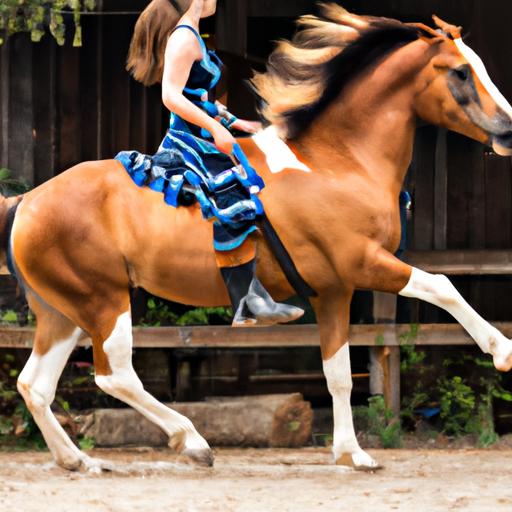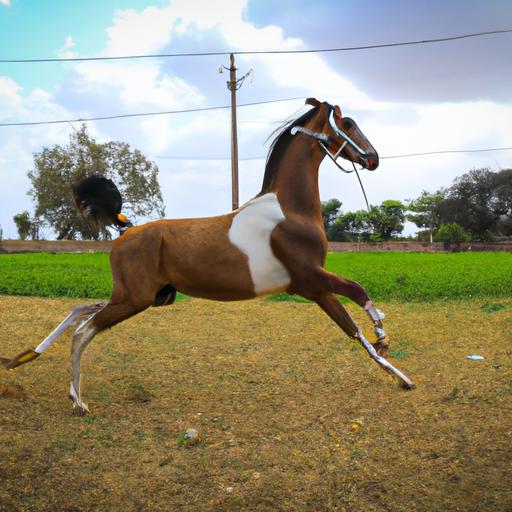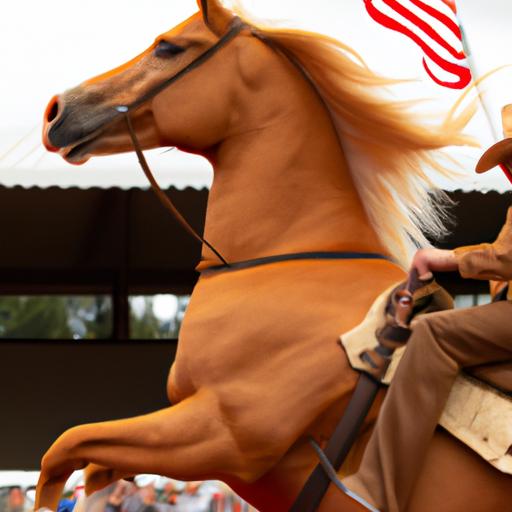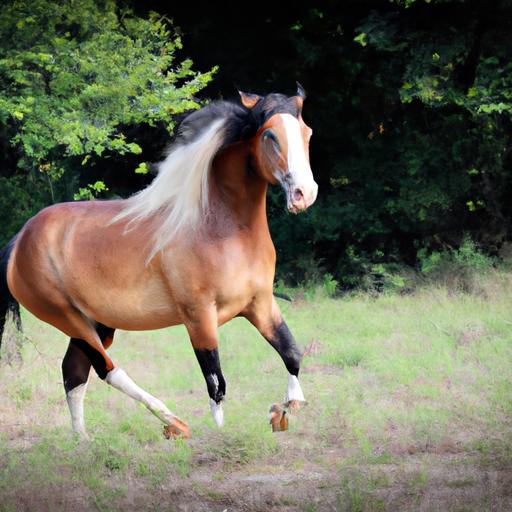Discover the beauty and connection of dancing at liberty horse training. Enhance the bond between horse and human through this unique and harmonious practice.
Introduction

Dancing at liberty horse training is a remarkable practice that goes beyond traditional horsemanship. It is a dynamic and captivating way of connecting with horses, fostering a deep bond between the human and equine partner. In this article, we will uncover the essence of dancing at liberty horse training and explore its profound impact on the horse-human connection.
Defining Dancing at Liberty Horse Training
Dancing at liberty horse training is an artful approach that emphasizes voluntary collaboration and harmony between the horse and the trainer. Unlike traditional methods that rely on physical aids and constraints, dancing at liberty allows the horse to express itself freely, showcasing its natural grace and beauty. This unique form of training encourages mutual respect, communication, and trust, enabling a profound partnership between horse and human.
The Power of the Horse-Human Connection
At the heart of dancing at liberty horse training lies the profound bond between horse and human. It goes beyond mere obedience; it is a relationship built on trust, understanding, and empathy. Through dance, both horse and trainer communicate on a deeper level, transcending verbal language and relying on subtle cues, energy, and body language. This connection enhances mutual respect and creates a profound sense of unity, where horse and human become true partners in rhythm.
A Glimpse into the History of Dancing at Liberty Horse Training
Dancing at liberty horse training draws inspiration from ancient equestrian traditions and the natural movements of horses in the wild. Throughout history, various cultures have recognized the power and beauty of dance in the equine world. From the elegant dressage displays of the Renaissance to the liberty acts of traveling circuses, dancing at liberty has captivated audiences worldwide. Today, it has evolved into a modern discipline that celebrates the artistry and partnership between horse and human.
Stay tuned as we delve deeper into the benefits, techniques, and steps involved in dancing at liberty horse training. Let’s explore the wonders of this enchanting practice that brings together the grace of dance and the majestic spirit of horses.
Next section: Benefits of Dancing at Liberty Horse Training.
Benefits of Dancing at Liberty Horse Training

Dancing at liberty horse training offers a myriad of benefits that go beyond the realm of traditional training methods. This section explores the remarkable advantages that both the horse and trainer can experience through this enchanting practice.
Improved Communication and Bond
Dancing at liberty horse training fosters a deep and meaningful connection between the horse and trainer. By relying on non-verbal cues and subtle energy, this form of training enhances communication and understanding. As the horse learns to interpret the trainer’s movements and intentions, a harmonious bond is forged, built on trust, respect, and clear communication. This deep connection serves as the foundation for a successful partnership in dance.
Enhanced Body Awareness and Coordination
Through dancing at liberty, horses develop heightened body awareness and coordination. As they learn to move in harmony with their trainers, they become more attuned to their own bodies, refining their movements and balance. This improved physical awareness translates to other aspects of their training, enhancing their overall performance and agility. Dancing at liberty encourages horses to become true athletes, moving with grace and precision.
Increased Trust, Respect, and Cooperation
Dancing at liberty horse training cultivates a relationship based on trust, respect, and cooperation. By allowing the horse to express itself freely, without force or constraint, a deep sense of trust is established. This mutual trust leads to increased respect between horse and human, creating a partnership built on equality and understanding. As the horse willingly participates in the dance, a sense of cooperation blossoms, making training sessions joyful and rewarding experiences for both horse and trainer.
Mental and Physical Stimulation
Engaging in dancing at liberty provides both the horse and trainer with mental and physical stimulation. The horse’s mind is challenged as it learns to interpret cues, anticipate movements, and respond to the trainer’s energy. This mental engagement keeps the horse focused, attentive, and eager to learn. Additionally, dancing at liberty offers a physically demanding workout for both the horse and trainer, promoting strength, flexibility, and coordination. It is an invigorating and fulfilling activity that benefits the well-being of both partners.
In the next section, we will explore the techniques and methods employed in dancing at liberty horse training, unveiling the secrets to creating a harmonious dance between horse and trainer.
Next section: Techniques and Methods for Dancing at Liberty Horse Training.
Techniques and Methods for Dancing at Liberty Horse Training

Establishing a Solid Foundation
Before embarking on the journey of dancing at liberty with your horse, it is crucial to establish a solid foundation of groundwork and basic commands. This foundation lays the groundwork for effective communication and understanding between you and your equine partner. Spend time developing a strong bond through ground exercises, teaching your horse to respond to cues such as leading, stopping, and backing up. This will create a solid framework for the dance to come.
Building Trust and Understanding
Trust and understanding are the pillars of dancing at liberty horse training. Positive reinforcement techniques, such as reward-based training, help build trust and encourage your horse to willingly participate in the dance. By rewarding desired behaviors with treats, praise, or a gentle pat, you reinforce the bond and establish a positive association with the training process. This approach fosters a sense of cooperation and mutual respect, creating a harmonious partnership.
Utilizing Body Language and Cues
Horses are incredibly perceptive to body language and subtle cues. While dancing at liberty, your body becomes the primary means of communication. Mastering your own body language is essential in guiding your horse through the dance routine. Pay attention to your posture, energy, and movements, as they convey your intentions to the horse. Additionally, develop a repertoire of specific cues that prompt certain movements. This language becomes a secret code between you and your equine partner, allowing for seamless communication during the dance.
Incorporating Music and Rhythm
Music and rhythm add a whole new dimension to the dancing experience. Selecting the right music that complements the horse’s movement and energy can enhance the overall performance. The rhythmic beats serve as a guide for both horse and trainer, synchronizing their movements and creating a mesmerizing dance. Experiment with different genres and tempos to find the perfect soundtrack that resonates with your horse’s unique spirit.
By utilizing these techniques and methods, you will lay the groundwork for a successful dancing at liberty horse training journey. In the next section, we will walk you through a step-by-step guide to help you bring the beauty of dance to life with your equine partner.
Next section: Step-by-Step Guide to Dancing at Liberty Horse Training.
Step-by-Step Guide to Dancing at Liberty Horse Training
Preparing the Training Area and Ensuring Safety Measures
Before embarking on the enchanting journey of dancing at liberty horse training, it is crucial to create a safe and conducive environment for both you and your equine partner. Clear any potential hazards from the training area, ensuring it is free from obstacles that could impede movement or cause harm. Additionally, ensure that the area is securely fenced or enclosed to prevent any accidental escapes.
Warm-up Exercises and Stretches for the Horse
Just like humans, horses benefit from warm-up exercises and stretches to prepare their bodies for dancing. Begin by engaging in a light groundwork session, allowing the horse to stretch and warm up its muscles. Incorporate gentle exercises such as lunging, circles, and lateral movements to promote flexibility and suppleness. These warm-up exercises not only prevent injuries but also establish a focused and attentive mindset for the dance session ahead.
Introducing Dance Moves and Transitions Gradually
When commencing dancing at liberty horse training, it is essential to introduce dance moves and transitions gradually. Start with simple movements such as walking, trotting, and halting, using clear and consistent cues to guide your horse. As your equine partner becomes more comfortable and familiar with the dance routine, gradually introduce more complex maneuvers such as side-passing, pivots, and spins. Remember to reward your horse for each successful attempt, reinforcing positive behavior and motivation.
Practicing Routines and Refining the Performance Together
To achieve a seamless dance routine, consistent practice is paramount. Repetition allows both you and your horse to develop muscle memory and coordination, leading to a harmonious and synchronized performance. Practice the routine in short sessions, gradually increasing the duration as your horse gains confidence and mastery. During practice, pay attention to your horse’s body language and responses, adapting your cues and timing accordingly to refine the performance together.
Gradually Removing Physical Aids and Achieving True Liberty
As the dance routine becomes ingrained in your horse’s mind and body, you can start removing physical aids such as lead ropes or lunge lines. This gradual process allows your equine partner to experience true liberty, moving and dancing without any external restraints. However, always prioritize safety and gradually increase the level of freedom, ensuring your horse remains responsive and engaged throughout. Achieving true liberty in dancing fosters a deeper connection and showcases the mutual trust and understanding between you and your horse.
By following this step-by-step guide, you can embark on the captivating journey of dancing at liberty horse training, fostering a remarkable partnership that transcends boundaries and captivates the hearts of all who witness it.
Next section: Tips for Success in Dancing at Liberty Horse Training.
Tips for Success in Dancing at Liberty Horse Training
Patience, Consistency, and Positive Reinforcement
When it comes to dancing at liberty horse training, patience is key. Building a strong foundation of trust and communication takes time, so it’s important to approach each training session with patience and a positive mindset. Consistency is also crucial in reinforcing the desired behaviors and maintaining the connection with your horse. By consistently rewarding and reinforcing positive responses, you can encourage your horse to engage and participate willingly in the dance.
Understanding and Respecting the Horse’s Individuality and Limitations
Each horse has its own unique personality, strengths, and limitations. It’s essential to understand and respect these individual traits when training at liberty. Take the time to observe and learn about your horse’s preferences, learning style, and physical abilities. Adapt your training techniques accordingly, allowing for flexibility and catering to their specific needs. By honoring their individuality, you create an environment that promotes trust and cooperation.
Practicing in a Stress-Free and Comfortable Environment
Creating a stress-free and comfortable training environment is essential for successful dancing at liberty. Horses are highly intuitive creatures that can sense your energy and emotions. Ensure that the training area is free from distractions, loud noises, and other stress-inducing elements. Provide a safe and comfortable space where your horse can freely express itself and feel at ease. This serene environment will foster a positive learning experience and strengthen the bond between you and your equine partner.
Seeking Professional Guidance and Attending Workshops or Clinics
To further enhance your skills in dancing at liberty horse training, consider seeking professional guidance or attending workshops and clinics. Learning from experienced trainers and experts in this field can provide valuable insights, techniques, and feedback to further refine your training methods. These opportunities also offer a chance to connect with like-minded individuals who share your passion for dancing at liberty. Embrace the opportunity to expand your knowledge and grow as a dancer and trainer.
By incorporating these tips into your dancing at liberty horse training journey, you will pave the way for success and cultivate a stronger partnership with your horse. Remember, patience, understanding, and a stress-free environment are the pillars of a thriving dance between horse and human.
Next section: Showcasing Dancing at Liberty Horse Training.


